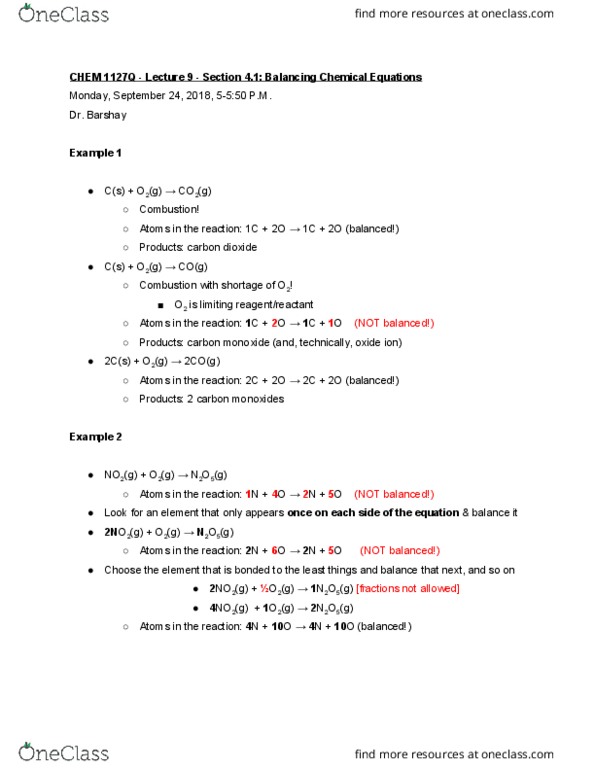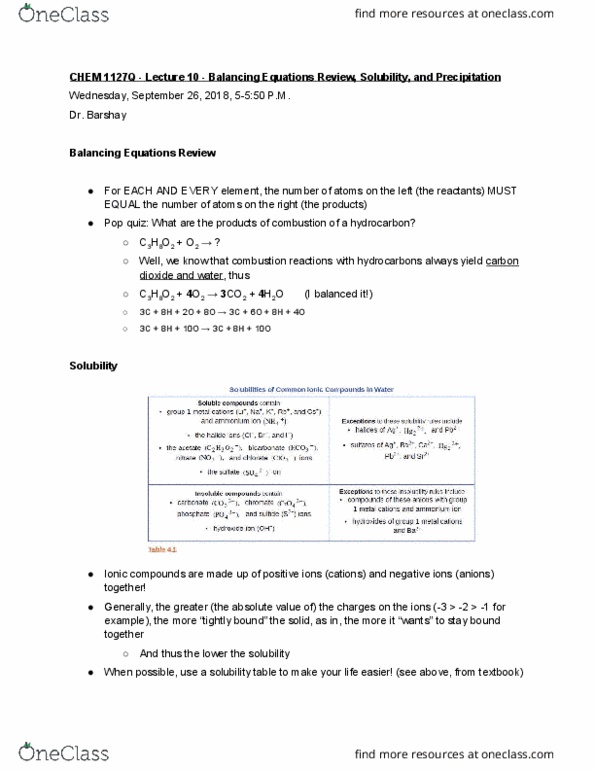CHEM 1127Q Lecture Notes - Lecture 14: Lead, Solubility Table
CHEM 1127Q verified notes
14/22View all
Document Summary
Chem 1127q - lecture 10 - balancing equations review, solubility, and precipitation. For each and every element, the number of atoms on the left (the reactants) must. Equal the number of atoms on the right (the products) Well, we know that combustion reactions with hydrocarbons always yield carbon dioxide and water , thus. C 3 h 8 o 2 + 4 o 2 3 co 2 + 4 h 2 o (i balanced it!) Ionic compounds are made up of positive ions (cations) and negative ions (anions) together! Generally, the greater (the absolute value of) the charges on the ions (-3 > -2 > -1 for example), the more tightly bound the solid, as in, the more it wants to stay bound together. When possible, use a solubility table to make your life easier! (see above, from textbook) This is when two solutions containing soluble substances combine to produce an insoluble substance, namely a salt, that is a solid.





